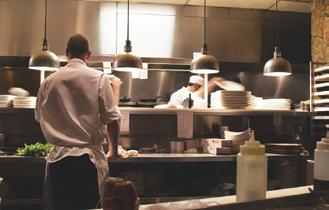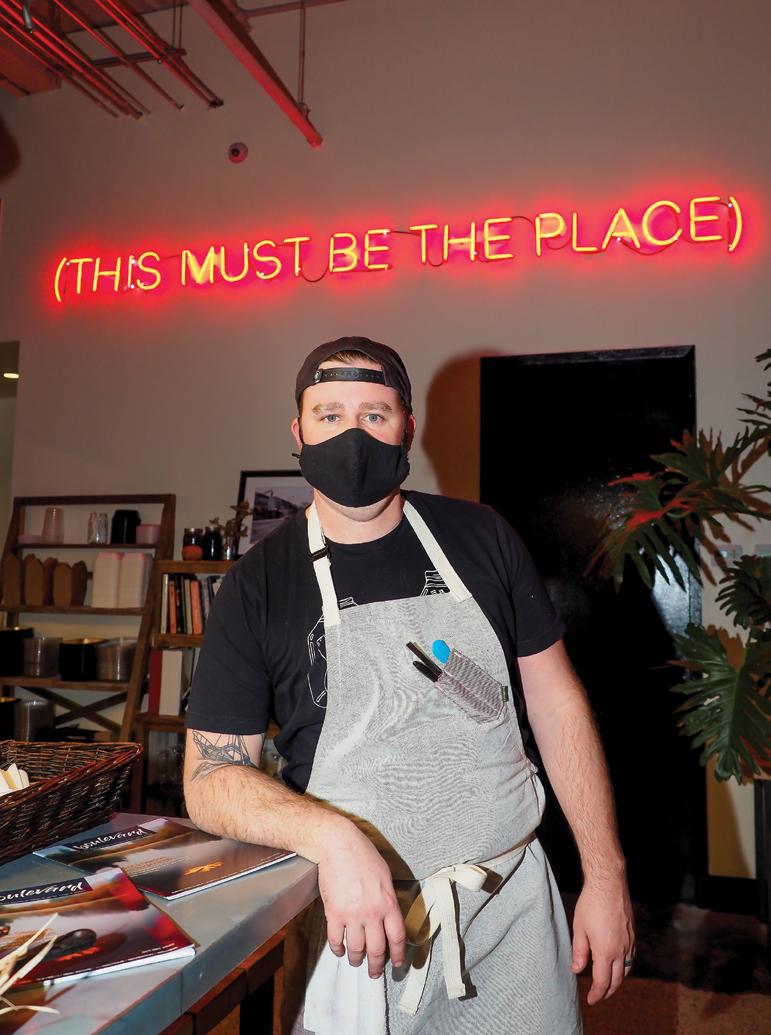
9 minute read
Viewpoint: Tourism Tackling COVID-19
HOTELS PERSPECTIVE | The tourism industry is a prominent economic engine in the commonwealth of Virginia and the Hampton Roads area. In Virginia Beach, tourism represents the largest private sector industry, typically providing $60 million annually to the General Fund. The industry provides added quality of life for area residents, and guests and residents alike benefit tremendously from the offerings of quality restaurants, hotels and attractions, in addition to entertainment options. All of the tourism stakeholders have had to grapple with challenges from the pandemic and it continues to be a struggle for everyone. People have lost lives and businesses face immense hardships. Furloughs have occurred and restrictions have forced creative ways of running local hotels and restaurants. Sports tournament directors have changed their ways of doing business and the city of Virginia Beach has adapted and supported the industry by offering Beach Ambassadors and other supportive policy decisions. Virginia Beach hotel occupancy boasted the No. 1 nationwide spot for Destination Marketing Areas (DMA) for 16 weeks during the summer and into the fall of 2020. Although occupancy numbers fared better in our destination than others, Virginia Beach revenue fell $87.9 million from the prior calendar year when comparing 2019 to 2020. The winter of 2020 and into 2021 appears bleak as we face declining occupancy and revenue. We now expect the winter business forecasted from the opening of the new Virginia Beach Sports Center to occur at later dates due to rescheduling caused by COVID-19 restrictions. The hotel industry looks forward to warm weather and the wide distribution of the vaccine. We continue to hold cleanliness as a priority in all the properties and we forecast a strong summer, when pent-up demand for travel becomes a reality. The hotels welcome residents in the area to consider the gift of employment that tourism provides. Customer service skills and a desire to welcome others to our destination are the winning ingredients. We look forward to sharing our offerings of employment in 2021 at www.vbha.net or virginiabeachhotelassociation.com/find-a-virginia-beach-hotel-job/ or by emailing diana.burke@vbha.net for more information. Special congratulations and thanks to executive office manager, Deborah Buringa, as she celebrates 20 years of service to the Virginia Beach Hotel Association.
[ by Diane Burke ]
Advertisement
ISTOCK PHOTO
Diana Burke, executive director, Virginia Beach Hotel Association (VBHA), serves on a variety of boards including the Hampton Roads Chamber, Patriotic Festival, Virginia Beach Tour and Travel Foundation and the Virginia Tech Howard Feiertag Hospitality and Tourism Management Board.
RESTAURANTS PERSPECTIVE | The saying “business as usual” is not one that you have heard, or will hear, anytime soon from the restaurants in Virginia Beach. Under Governor Northam’s Executive Order 72, and as of press time, it was extended through the end of February 2021, restaurants have restrictions of 50 percent capacity with six feet of spacing between tables, bringing their capacity down to about 40 percent. Included in this order, they may not offer bar seating and alcohol sales and consumption ends at 10 p.m.
[ by Stacey Shiflet ]
U.S. RESTAURANT INDUSTRY PROJECTIONS PRIOR TO THE
CORONAVIRUS PANDEMIC
$899
BILLION
Projected sales in 2020
1
MILLION
Restaurant locations in U.S.
15.6
MILLION
Restaurant employees
1.6
MILLION
New jobs created by 2030
Each day, restaurateurs worry about announcements of further restrictions or possible closures. Our restaurants operate under strict sanitation guidelines and follow all COVID-19 related guidance to keep their staff members and customers safe and healthy. Restaurants in the United States are closing at an alarming rate. *Nearly 1 in 6 restaurants (representing nearly 100,000 restaurants) closed either permanently or long term; nearly 3 million employees still remain out of work; and the industry is on track to lose $240 billion in sales for 2020. Through 2020, restaurants in Virginia Beach have been more fortunate than the national average, but the start of 2021 has shown several of our local restaurants throwing in the towel and closing for good. Thankfully, as of print time for this publication, none of the members of the Virginia Beach Restaurant Association has had to close. The Virginia Beach community has been a big part of the restaurants being able to survive by supporting small business and dining in or supporting takeout at their local favorites. We encourage dining in, takeout and the purchase of gift certificates for future use and to share with friends and family. www.dineinvb.com
Stacey Shiflet, executive director of the Virginia Beach Restaurant Association, serves on many organization boards, some of which include the Bayfront Advisory Commission, Advertising Advisory Commission, Virginia Beach Travel and Tourism Foundation Board Member.
*Reference: https://apnews.com/ press-release/pr-newswire/legislaturenorth-america-united-states-restaurantoperators-health-9fe81820b3711b64262f3c 0ed6d31206
Publisher’s Viewpoint
At the start of the pandemic, everything began shutting down and there was a helpless feeling. Restaurant owners and operators lifted up employees, supported communities and expanded offerings, such as curbside and delivery services. Curbside service remains, but human interaction still presents a challenge. The delivery conundrum weighs heavily on restaurants, with the rising costs it incurs. Outdoor dining is also here to stay—offering a little bit of Europe to Main Street America. Post-COVID-19, people will want to connect and celebrate, and there’s no better place to do that than over a shared meal. As the pandemic moves into its second year, many consumers continue to partake in meals within the confines of their own dining rooms, not those at restaurants. However, we all have pent-up desires and hopes to return to restaurants and see long-missed friends over a meal, honor a company milestone with colleagues or have full-blown celebrations to mark a birthday or anniversary. Restaurateurs need to prepare to ensure that every guest’s first meal back is a memorable experience. Many diners will likely want a more subdued first meal back at a restaurant so they can catch up with people they missed. Operators will want to ensure social distancing and food safety in the dining room. People will expect a comforting first meal back. Most long for a taste of their favorite dish—long missed—that will make the experience relaxing and all-the-better for lingering
[ by berry brunk ]

and socializing with friends. Off-premise ordering strategies will continue in popularity, and any guests that operators can serve indoors or outdoors, will have higher expectations for food safety and COVID-19 precautions. Now is the time to reassure consumers about your safety policies, it will pay off later when the pandemic ends.
Consumer Data
A recent survey and report from Datassential yielded the following insights: • 48 percent of consumers say they will definitely avoid eating out • 50 percent of optimists think they will get to see their friends and family in person soon • 48 percent of optimists think they will get to do what they loved doing outside the house (eating at a restaurant, going to the movies, etc.) • 57 percent of pessimists think the country will not get the coronavirus under control fast enough • 41 percent of pessimists think they’ll still be unable to visit a restaurant or movie theater for a while • 57 percent of consumers want to improve their health and lose weight • 41 percent of consumers want to cut back on sugar • 29 percent of consumers want to support local restaurants by ordering more • 58 percent of consumers look forward to going out to restaurants once they are vaccinated • 62 percent of consumers said they will continue to order for delivery or takeout over the next few months
The good news? Pent-up demand is huge. Data from the National Restaurant Association shows that 83 percent of adults say they don’t eat on the premises at restaurants as often as they would like—up from 45 percent pre-pandemic. Baby boomers especially miss eating out, with 90 percent reporting they would like to dine at restaurants more frequently. The not-so-good news is that closures continue at a significant rate—about 17 percent of all U.S. restaurants and counting—and those closures represent disproportionately independent businesses. That number is expected to grow as the long winter compromises the outdoor dining lifeline and as coronavirus cases continue to increase. Delivery provides just one piece of an off-premise landscape made particularly relevant by the pandemic as droves of consumers sought safety and convenience through their mobile phones. Curbside and carryout became part of the business. They fulfill that safety/convenience demand with less cost for both the consumer and the operators. Research shows that 40 percent of Americans took advantage of takeout and curbside delivery (at both fast casual and dinein) during the pandemic, and about two-thirds of those said they would continue using these services even if restrictions lift. As the demand for off-premise business stays elevated, expect more bells and whistles to support such channels. Here in Virginia, we had a workforce of 378,600 restaurant and foodservice employees before the pandemic. In 2019 it equaled nine percent of employment in the state. That has dwindled considerably. Around Richmond, nearly 100 restaurants have closed. Tidewater has fared much better with few, if any, major closings due to COVID-19. Restaurants have suffered the highest sales and job losses of any industry since the pandemic began—and sustained the most whiplash. They have opened, closed, been at 50 percent seating capacity and only allowed to provide take-out meals. This problem needs dedicated longterm financial assistance to solve. Our industry leaders do not expect the restaurant sector to recover until 2023, even then it will be largely fast, casual establishments and restaurants with limited service that will do well. Full-service restaurants may need until 2025 to get back to preCOVID-19 revenue. If we want to see these places survive, state officials must step in and create long-term relief specifically for small businesses, which includes neighborhood diners, city cafés and local pizza shops. They can do this by extending the state’s COVID-19 Relief Fund. We have reason for optimism right now about the pandemic, but the vaccine distribution provides no panacea. Restaurants won’t suddenly have the rent money, crowded dining rooms or the ability to rehire workers. We need state relief funds focused on small businesses through at least the next fiscal year. “I like to envision this time next year with restaurants booked solid, staffing at capacity and owners moving their finances back into the black,” said Eric Terry, president of the Virginia Restaurant, Lodging & Travel Association in an opinion piece he authored for Virginia Mercury. “But I am a realist, and officials should be, too. Virginia needs to extend the relief fund through June 2022 to hold off further economic devastation and keep the lights on in our favorite eateries.” It may be some time until we fully understand just how much impact the pandemic has had on this massive industry, but the high-level impacts have become quite clear in just one year. Essentially, consumers miss dining out and they will ultimately return. But their behaviors have changed and they’re not changing back. That means restaurants will have to master the art of balance now more than ever. The Boulevard Team will stay committed to supporting our local restaurant industry in any way possible. All of you should too. Berry Brunk, president of Boulevard, grew up on the Eastern Shore and in Tidewater. He’s worked with companies representing the engines of job creation and economic development in their respective cities.









